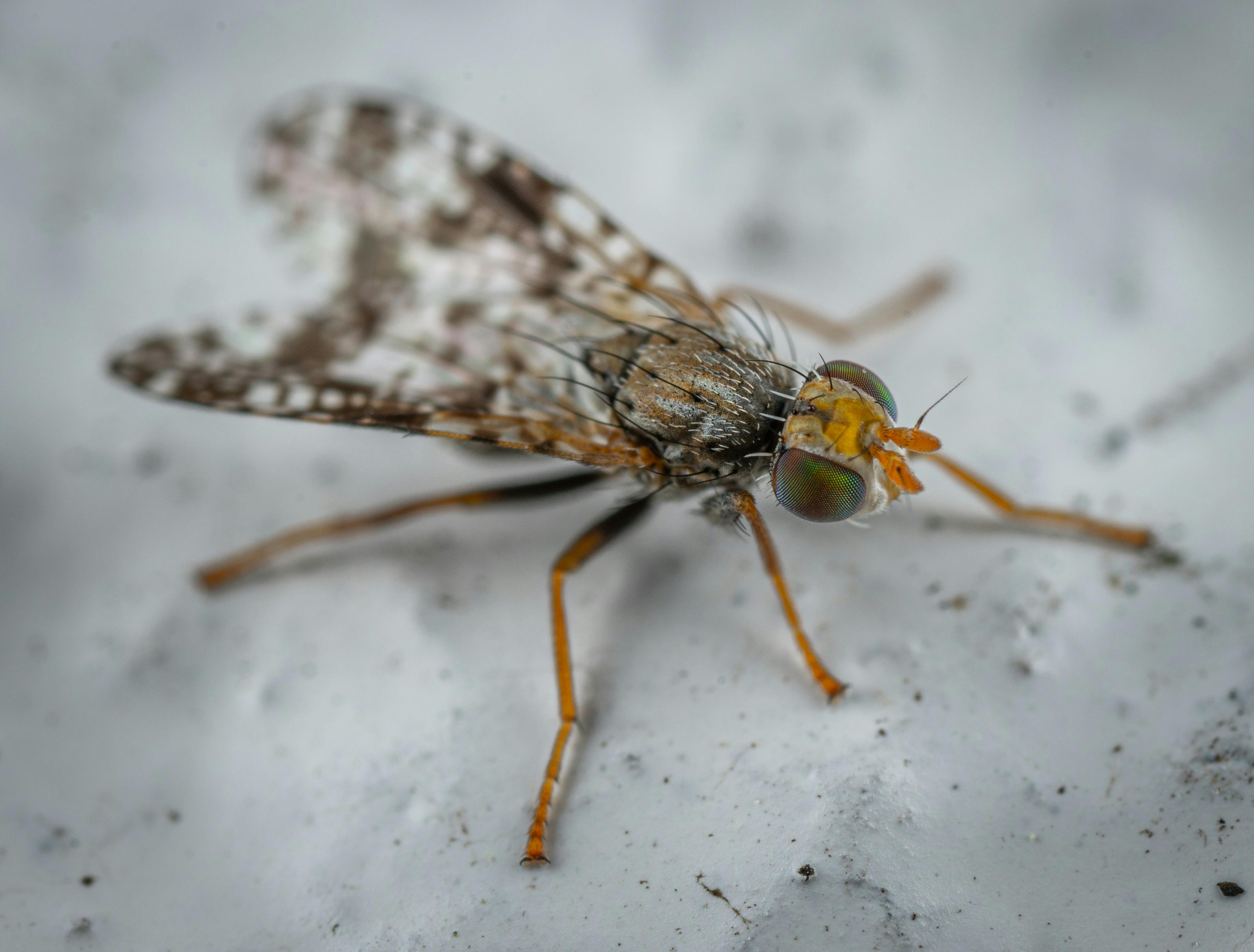Are Fruit Flies and Gnats the Same Species?
Fruit flies and gnats are often confused for one another, but they are in fact two separate species. Fruit flies are categorized as Drosophila melanogaster, while gnats belong to different families, such as Sciaridae, Cecidomyiidae, and Anisopodidae. While there is some overlap in the habitats of these two species, fruit flies tend to be attracted to ripe or rotting fruit, while gnats generally prefer damp soil or areas with high humidity.In terms of appearance, fruit flies are typically smaller than gnats and have red eyes. Gnats usually have more slender bodies compared to fruit flies and may have either clear or dark-colored eyes. Another notable difference between the two is that fruit fly larvae feed on decaying organic matter while gnat larvae feed off of plant roots or fungi.Fruit flies and gnats can both become a nuisance in your home if left unchecked. For this reason, it’s important to identify which type of insect you’re dealing with in order to effectively remove them from your space. If you think you may be dealing with a fruit fly infestation, removing any sources of overripe fruit can help reduce their numbers significantly. For gnats, it’s best to reduce moisture levels around your home by fixing any water leaks or installing a dehumidifier.Ultimately, although both species can be annoying pests that invade our homes uninvited, it’s important to remember that they’re not the same species. By properly identifying each type of insect and taking the necessary steps to address their presence in your home or garden, you can ensure that these critters don’t cause any further disruption!
Physical Characteristics
Fruit flies, scientifically known as Drosophila melanogaster, are small insects that typically measure between 1/8 and 1/4 of an inch in length. They have red eyes, tan thoraxes and yellow abdomens with black stripes. The wings of a fruit fly are clear with distinctive veins. Female fruit flies also possess an ovipositor, which is used to lay eggs in rotting fruit or other decaying material.Behavioral Characteristics
Fruit flies are attracted to the smell of overripe and fermenting fruits and vegetables. They tend to move around in clusters rather than individually or in pairs, and they will feed on a variety of foods including plant matter, sugars, yeast and alcohol. Fruit flies are also capable of flying short distances. They usually do this when looking for food sources or when trying to escape from predators.Reproductive Characteristics
The reproductive cycle of the fruit fly is relatively short compared to other species. After mating, the female can lay up to 500 eggs in a single batch over the course of several days. The eggs hatch within 24 hours and become larvae within 48 hours. After molting several times, the larvae will pupate and become adults within 7-10 days after hatching from their eggs.Habitat Characteristics
Fruit flies prefer warm moist environments where there is plenty of food available such as rotting fruits or vegetables in a kitchen compost bin or garbage can. They can also be found in damp areas such as a basement or bathroom where they may feed on moldy materials like soap scum and mildewed grout lines. Fruit flies may also be found near garbage cans outside or near compost heaps kept outdoors.Appearance
Gnats are small insects, typically between 1/16 and 1/8 of an inch in length. They have two wings, two antennae, and three body parts: the head, thorax and abdomen. Gnats are usually black, gray or dark brown in color. Some species may have stripes or patterns on their wings.Habitat
Gnats can be found in a variety of habitats including wetlands, woodlands, grasslands and even inside homes. They are attracted to moisture and damp areas where they can find food and reproduce. Gnats prefer moist soil and decaying organic matter such as leaves, compost piles or even standing water.Diet
Gnats feed on a variety of food sources including nectar from flowers, pollen, fungi and decaying plant material. Some species will also feed on other insects such as aphids or small mites.Reproduction
Gnats reproduce quickly due to their short life cycle. Females lay eggs in damp soil or other moist places where they hatch within a few days into larvae known as “maggots” which feed on decaying organic matter until they reach adulthood. The adult gnat then emerges from the soil fully formed after about a week to begin the cycle again.How Do You Get Rid of Fruit Flies and Gnats?
Fruit flies and gnats can be annoying pests in the home, especially when they are swarming around your food. To get rid of fruit flies and gnats, you need to make sure you eliminate their food sources, clean up any standing water, and use traps or insecticides if necessary.First, you should check for any ripe or overripe fruits and vegetables in your kitchen or pantry that may be attracting the flies. If any are present, discard them immediately and make sure to clean up any spilled juices or other liquids. It is also a good idea to regularly wash all of your fruit and vegetables before storing them.Next, look for any standing water in your home that could be providing a breeding ground for the flies. This could include leaking pipes or drains, potted plants that are over-watered, pet dishes with water that is not changed regularly, or other sources of moisture. Make sure these are fixed or cleaned up to prevent more pests from entering your home.Finally, if the fruit fly and gnat infestation persists despite your best efforts to eliminate their food sources and breeding grounds, you may need to use traps or insecticides to get rid of them completely. Traps work by luring the insects with a sweet smell like apple cider vinegar mixed with liquid soap; they enter the trap but cannot escape because of its design. Insecticides can also be used; however it is important to read all safety instructions carefully before using them in order to avoid any accidents or health risks.With some effort and patience, it is possible to successfully get rid of fruit flies and gnats from your home so you can enjoy a pest-free environment once again!

Preventing Fruit Flies and Gnats From Entering Your Home
Fruit flies and gnats can be an annoying nuisance in the home, but there are steps you can take to keep them from entering your house. To prevent fruit flies and gnats from entering your home, start by making sure all food sources are securely sealed. This includes any open containers of fruits or vegetables, as well as unsealed trash containers or pet food dishes. If possible, store these food sources in the refrigerator or in plastic containers with secure lids.In addition to sealing food sources, it is important to keep your home clean. Regularly sweep and mop floors to remove any food debris that could attract fruit flies and gnats. Clean up spills immediately to prevent sticky residue that might attract pests. Additionally, make sure all drains are clear of any buildup which could provide a breeding ground for these insects.
Finally, keep an eye out for any areas where fruit flies and gnats might be entering your home. Check window screens for any holes or tears that might allow pests to enter, and inspect doors for any cracks or gaps around the edges. If you find an entry point, seal it off with caulk or weatherstripping to block out unwanted insects. With these simple steps, you can help keep fruit flies and gnats away from your home.
Are Fruit Flies Harmful?
Fruit flies, also known as Drosophila melanogaster, can be found in homes, restaurants, and other places where food is stored or served. Generally speaking, fruit flies pose little risk to humans as they do not bite or sting. However, they can be an annoyance as they tend to swarm around food and drinks. In addition, fruit flies may carry bacteria that could potentially cause food poisoning if consumed.Fruit flies are attracted to sweet smells and can often be found near overripe fruits and vegetables. They can also be attracted to alcohol and sugary drinks. To prevent fruit fly infestations in the home, it is important to keep all food in sealed containers or the refrigerator, avoid leaving out any open containers of food or beverages for extended periods of time, dispose of garbage regularly, and thoroughly clean dishes after use.Fruit fly infestations can also occur in restaurants and other commercial establishments that serve food or beverages. In these cases, it is important for staff to practice proper hygiene and sanitation procedures to prevent the spread of bacteria and other contaminants from fruit flies.In summary, while fruit flies are not known to bite or sting humans directly, they do have the potential to transmit bacteria that could cause food poisoning if consumed. It is therefore important for individuals to practice good hygiene and sanitation measures at home and in commercial settings where food is served in order to prevent fruit fly infestations.Are Gnats Considered Fruit Flies?
Gnats or fruit flies are often confused due to their similar appearance and behavior. While both thrive in damp environments, they belong to different species. Gnats are typically attracted to decaying organic matter, whereas fruit flies primarily feed on ripe or fermenting fruits, highlighting their distinct ecological roles.
Are Gnats Harmful?
Gnats are small, annoying insects that can often be seen in large swarms. While they do not cause much harm to humans and animals, they can be a nuisance and a source of annoyance. Gnats feed on the nectar of flowers and other plant material, as well as on decaying organic matter such as fruit and vegetables. They also spread diseases through their bites and contact with their egg-laying sites.Gnats are typically found in damp areas such as around water sources, compost piles, or areas that are frequently watered. They breed quickly and can be difficult to control without the proper insecticides or other forms of pest control. Gnats can carry a variety of diseases including typhoid fever, dysentery, malaria, yellow fever, encephalitis, and sleeping sickness.
In addition to spreading disease, gnats can also damage plants by feeding on them and laying eggs in them. This can result in stunted growth or even death of the plant. They may also contaminate food sources with their droppings or eggs.
While gnats may not be directly harmful to humans or animals, it is important to take measures to reduce the number of gnats near your home or business in order to reduce the risk of disease transmission. Proper sanitation practices such as disposing of organic matter properly and keeping areas around water sources clean will help reduce the number of gnats present in an area. Pest control treatments such as insecticides may also be necessary if the infestation is severe enough.

Conclusion
Fruit flies and gnats are not the same thing. Fruit flies are members of the Drosophila family and gnats are from a variety of different families. While they may look similar, they have distinct differences in size, behavior, habitat, and life cycles. Fruit flies feed on fermenting materials while gnats feed on blood or nectar from flowers.Fruit flies can be identified by their bright red eyes and slightly larger size. Gnats can be identified by their smaller size and tendency to fly close to the ground. Both fruit flies and gnats can become nuisances when they enter homes or businesses, but they can be controlled with preventative measures or extermination methods.Knowing the difference between fruit flies and gnats is important for identifying these pests and taking steps to control them. By understanding their behaviors, lifecycles, habitats, and food sources, it is possible to determine which pest is causing problems in a particular environment. Controlling a fruit fly or gnat infestation quickly is essential for preventing further damage or health risks inside the home or business.


